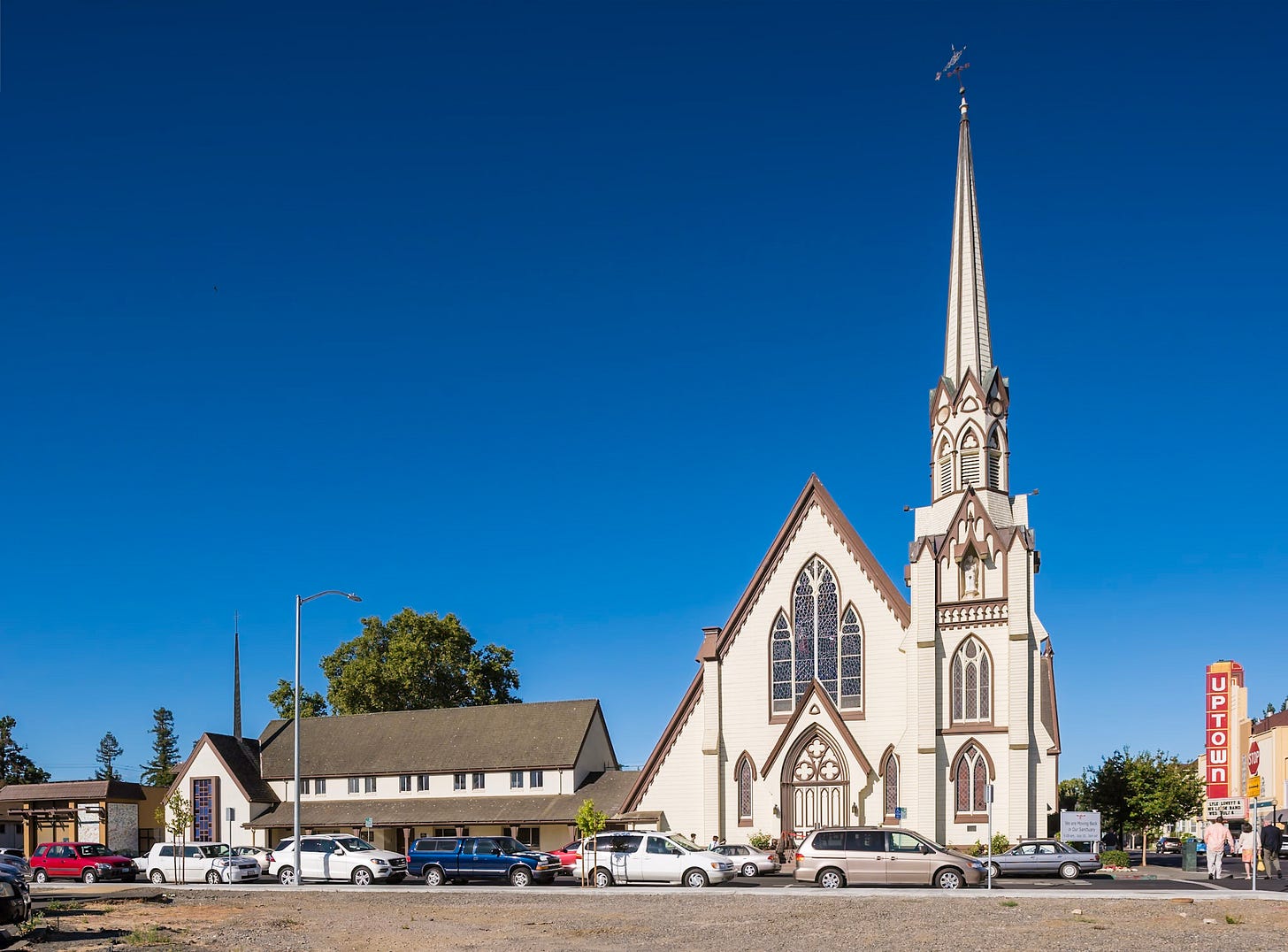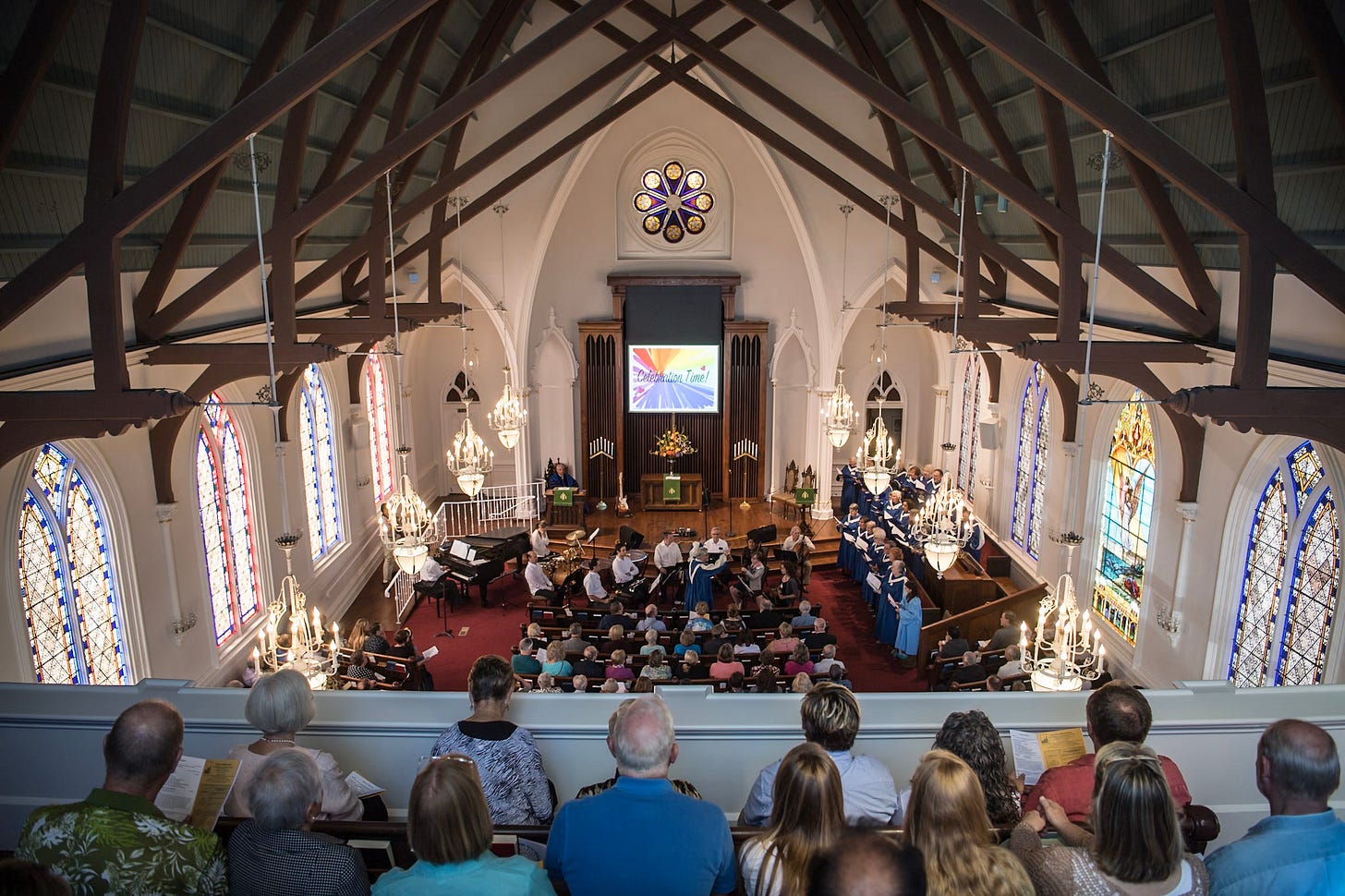Weekender Encore: Napa’s First Presbyterian Church Turns 150 Years Old
By Rebecca Yerger
NAPA, Calif. — Serving Napans as a place of worship since the 1870s, the First Presbyterian Church is also an architectural gem. Gracing the corner of Third and Randolph Streets, this building, with its tall steeple and ornate High Victorian Gothic Revival details, is a downtown Napa landmark that has withstood the test of time.
Due to its architectural and historical significance, the First Presbyterian Church has been bestowed with official honors and accolades, including listings on the National Register of Historic Places and city of Napa landmark roster. In 1975, The First Presbyterian Church became an officially registered California State Historic Landmark, as noted on the plaque located on the north, or Third Street, side of the building.
This local institution’s congregation will be paying a joyous tribute to their iconic house of worship, its strength, historic importance and architectural beauty as well as its visionaries and stewards on Aug. 24 and 25. In honor of its sesquicentennial, they will open its doors to welcome one and all to celebrate the iconic building. The festivities will include a Saturday afternoon presentation, from 3 to 5 p.m., titled “Echoes from the Past: Through Story and Song,” and a Sunday sermon service. Both are no charge events.
“Its story must be told,” event chair Julie Worthington said. “This is so exciting!”
The Aug. 24 presentation will feature a two-act program with the first act being historical accounts. Narrator Sheli Smith will first set the scene. Carroll Cotten, a Napa Valley actor, will portray the First Presbyterian Church’s visionary, Rev. Richard Wylie, and recount pivotal to amusing historical moments of the church and his service to the local congregation for over a half century. Following a brief intermission, Smith and Cotten will set the scene for the final act.
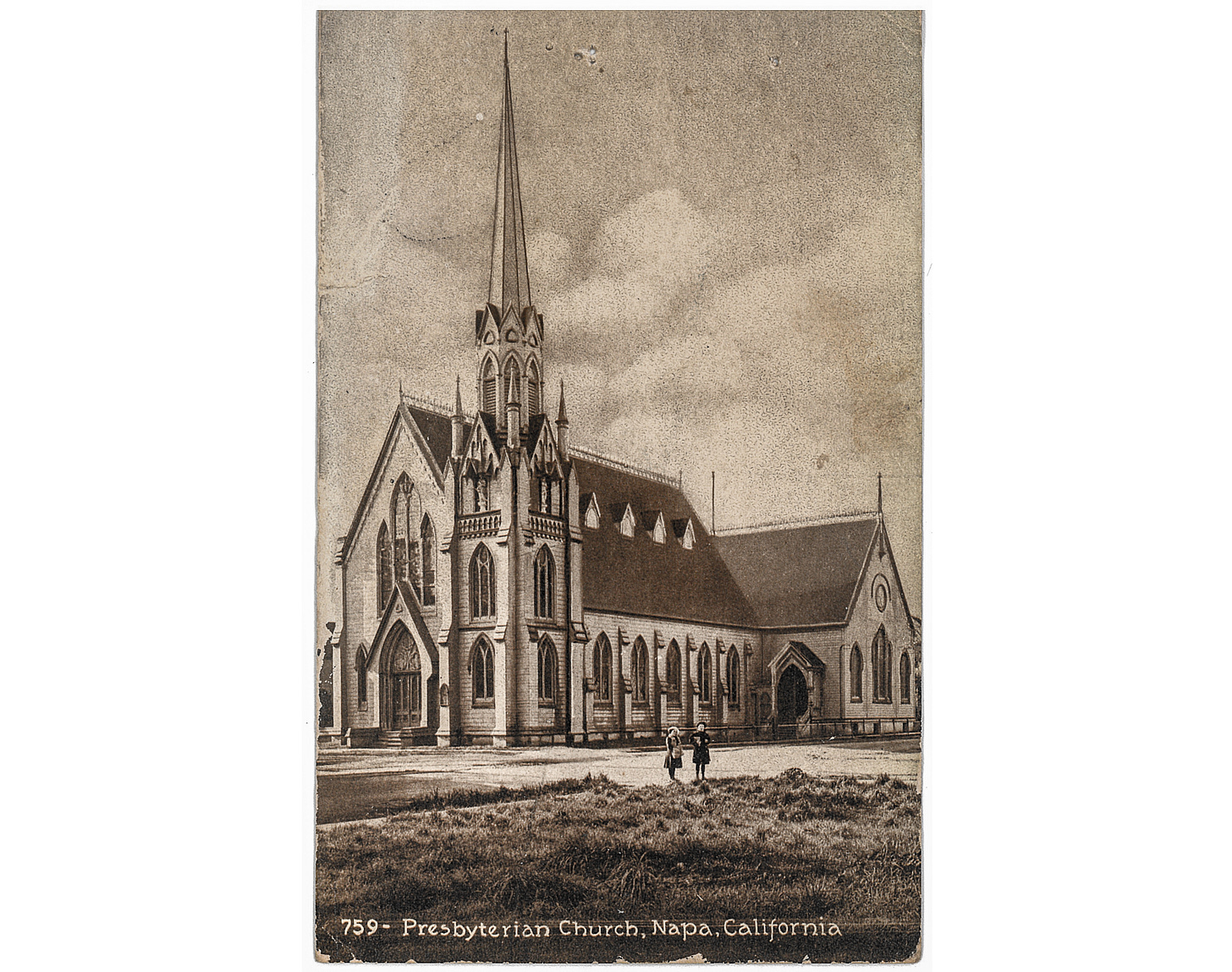
“The second half of the afternoon presentation will be a music program performed by Tom Flesher on the organ, Suzanne Quinlan as soprano and Kent Cohea on flute and saxophone,” Worthington said.
“The music selections will be across the board from classical to contemporary,” said Flesher, the church’s long-time organist. “One number will be a duet with Suzanne singing and Kent playing the flute. The Aug. 24 music program was inspired by the First Presbyterian Church dedicatory concert held in April 1875. The soprano was a Miss Harriet Gibbs, the future Mrs. Richard Wylie.”
Following the Saturday afternoon presentation will be a brief reception held in the adjoining Fireside room. The Sunday, Aug. 25 service, beginning at 9:30 a.m., will be filled with appropriate and rejoicing sermon and song.
“The focus of the service will be how we are so blessed,” said Rev. Genesis Auste, the church’s pastor.
The Sunday service will be followed by a brunch in the First Presbyterian gym located along Third and Franklin Streets.
All this glad tiding has been made possible through the determination and dedication of the First Presbyterian church’s visionaries and stewards, beginning with Revs. James and Richard Wylie, father and son pastors of the Napa congregation of the late-1800s. These two men were the driving force behind the design and construction of the First Presbyterian Church of Napa. While James would not live to see the building completed as he would die of tuberculosis, his birthplace of Scotland and connection to the aesthetics of the “Old World” Europe influenced the High Victorian Gothic Revival architectural style selected for the Napa place of worship.
The cornerstone of the present-day church was laid in 1874 from which the wood frame and clad building quickly rose. Its architectural design team was Daley and Eisen. Constructed at a cost of $17,375, its contractor was J.W. Batchelor of Vallejo. A Mr. E. Schltis painted the exterior and interior for $1,875.
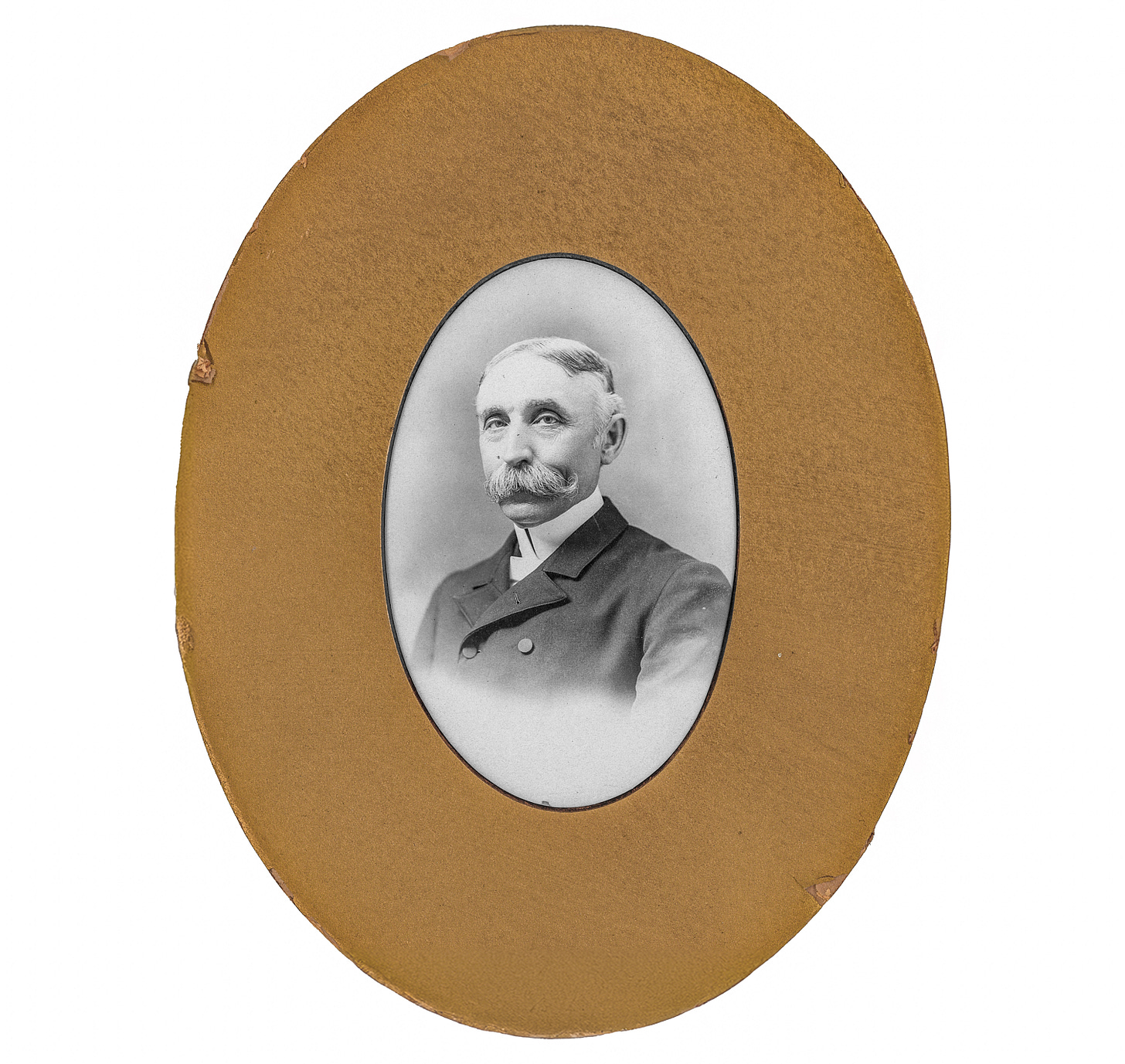
The First Presbyterian Church retains most of its original details and materials. These features include pointed, or Gothic, arches, doors and windows, steeply pitched rooflines and gables with decorative vergeboards, or “gingerbread.” The exterior is also detailed with large-scale angel statues set within niches in the steeple.
Another noteworthy exterior feature of the church may not be noticed by many observers — its cornerstone. It actually dates to the 1850s and was originally laid for the first church building for Napa’s Presbyterian congregation. It was re-dedicated on Aug. 20, 1874, when construction began on the present-day historic First Presbyterian Church.
Yet another remnant of the earlier church is its bell. Following the 1869 remodel of the church, the bell was given to the congregation by their pastors, the Wylies. They had purchased the 850-pound bell from a San Francisco foundry. It was re-installed in the 1870s church to serve continuously until Aug. 24, 2014, when the South Napa earthquake ripped it from its mountings and tossed it down the steeple. Following its repair and re-installation on Aug. 25, 2015, the bell resumed its task of ringing in its flock every Sunday.
Continuing with the 1850s to 1860s church building for a moment longer, it also stood alongside Randolph Street on property donated to the congregation by Napa’s co-founder Nathan Coombs. That original church was constructed shortly after Napa’s First Presbyterian Church was officially established on Feb. 12, 1856. However, the First Presbyterian congregation in Napa dates to 1853. During those earliest of days, they met for services at the first Napa County courthouse once located near the present-day courthouse.
Returning to the 1870s church building, its original footprint was smaller than the contemporary building until the chapel wing was added in 1890. Accompanying the late-1800s church on the property was the manse — housing for the pastor. It was located along Randolph Street on the south side of the church. The manse was torn down circa 1956 to make way for the Christian education building. The manse’s longest-term tenant was Richard Wylie. He was pastor of Napa’s First Presbyterian Church from Aug. 1866 to May 1923.
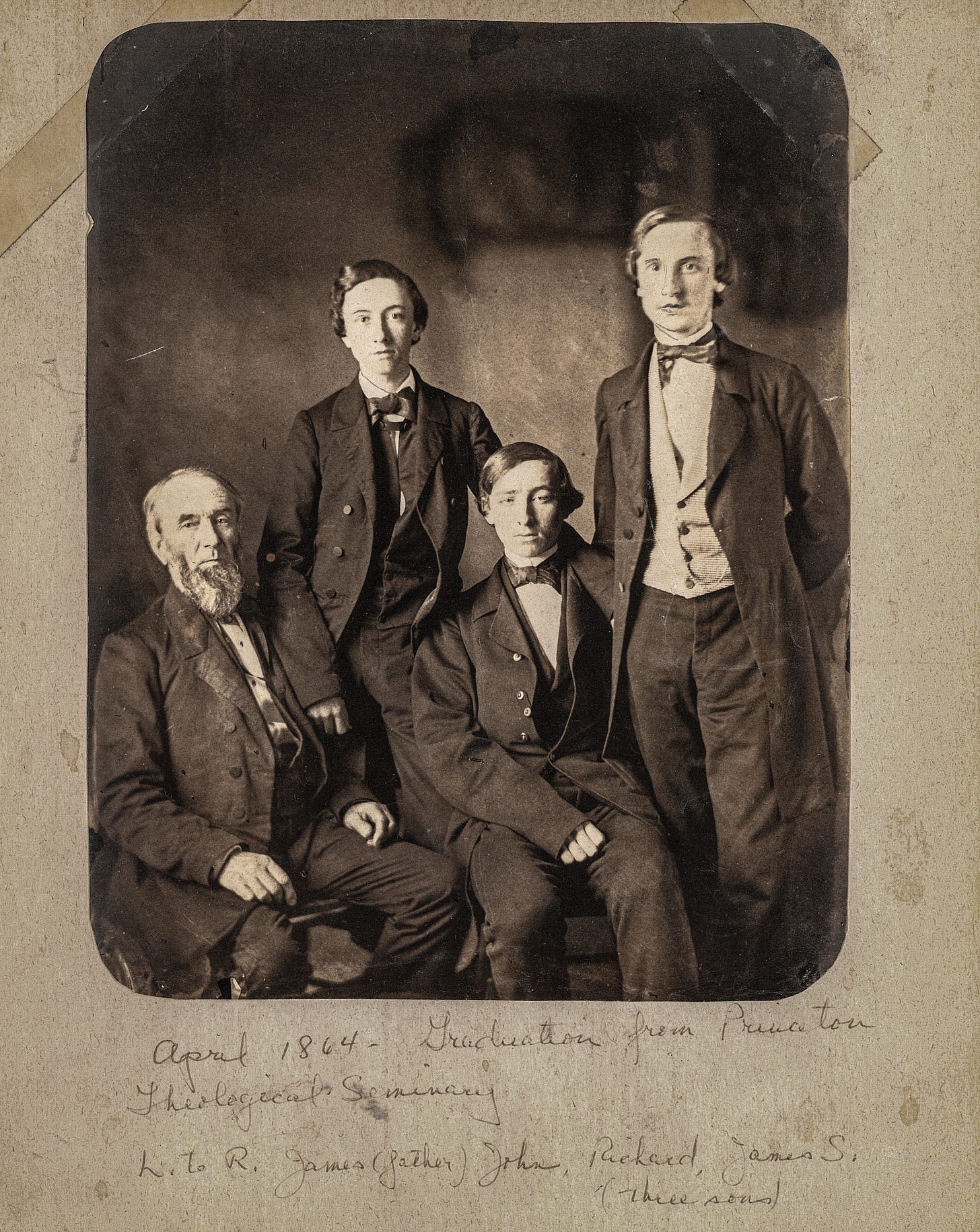
During Wylie’s long tenure, the interior of the church remained relatively untouched. Although, in 1911, the original gas lighting fixtures were converted to electricity. Wylie had hoped to surprise his parishioners with the modernization via a dramatic unveiling. With the cooperation of the electrician, Wylie raised his arms and commanded, “Let there be light!” A brief flash of light was quickly followed by total darkness. He jokingly remarked that’s what one gets when trying to play God. With a bit of fumbling in the dark, the electrician replaced the burnt-out fuse and slowly turned on the newly electrified lights.
Another special interior appointment the Napa Presbyterians enjoyed was a pipe organ. According to Flesher, it was shipped to the church via a Napa River steamboat from San Francisco in 1874. It was placed within the balcony area of the sanctuary. The present-day organ, installed circa 1960, is located at the front of the sanctuary.
As attendees listen to the organ or choral music, the numerous art-glass windows call for their attention. Some of these windows are original to the building while others have been added over time as memorials. One such memorial gift window may be the work of Louis Comfort Tiffany. Located within the north-facing wall of the sanctuary, this window was given to the church by Hugh Crawford in memory of his wife Judith during the late-1800s.
“Tiffany was installing windows in the chapel on Mare Island at the time Mr. Crawford was interested in a stained-glass window,” reads a First Presbyterian Church of Napa pamphlet. “It is probable, although not documented, that the Crawford window is an original Tiffany. More than half of Tiffany’s work is not signed, yet the jeweled top and use of grey opaque glass to simulate marble pillars (as seen in the Crawford, First Presbyterian Church of Napa, window) are hallmarks of Tiffany creations.”
That window and other art-glass windows sustained damage during the 2014 earthquake and the early 2024 windstorm. While the damage has been repaired, other alterations have been made to the church post-2014 earthquake. The wall between the narthex (front entry area) and sanctuary was significantly altered with the removal of original wood panels to install windows. This alteration allows a direct view of the sanctuary from the entry area and exterior. The narthex space was also enlarged to create a reception area. Also, as part of the earthquake repairs, the foundation was retrofitted, an air conditioning system was installed as was an accessibility ramp.
The building’s latest setback was a windstorm that ripped off all its copper roofing. The interior of the sanctuary was soaked by rain water seeping through the unprotected roof. Also, sections of loose roofing damaged some of the windows.
However, just in time for the 150th birthday celebration, the First Presbyterian Church has been fully repaired.
“This church is not only a symbol of the resilience of the building itself, but also its congregation,” said Rev. Auste. “It is also important to all Napans as demonstrated through the generosity of the entire community. Come and let’s celebrate this blessing together.”
If today’s story captured your interest, explore these related articles:
Sunday E-dition: Elodie Hogan and Hilaire Belloc — A Transcontinental Love in the 1800s
Weekender Encore: Nature’s Sweet Treasure — The Blackberries of Napa Valley
Birdwatching in Napa County Reveals Avian Wonders and Conservation Champions
Weekender Encore: The Napa Valley Writers’ Conference Starts Soon
Weekender Encore: ‘The Real Housewives of Napa Valley’ Revealed
Rebecca Yerger is a local historian, historic preservation consultant, writer and Napa Valley native.



